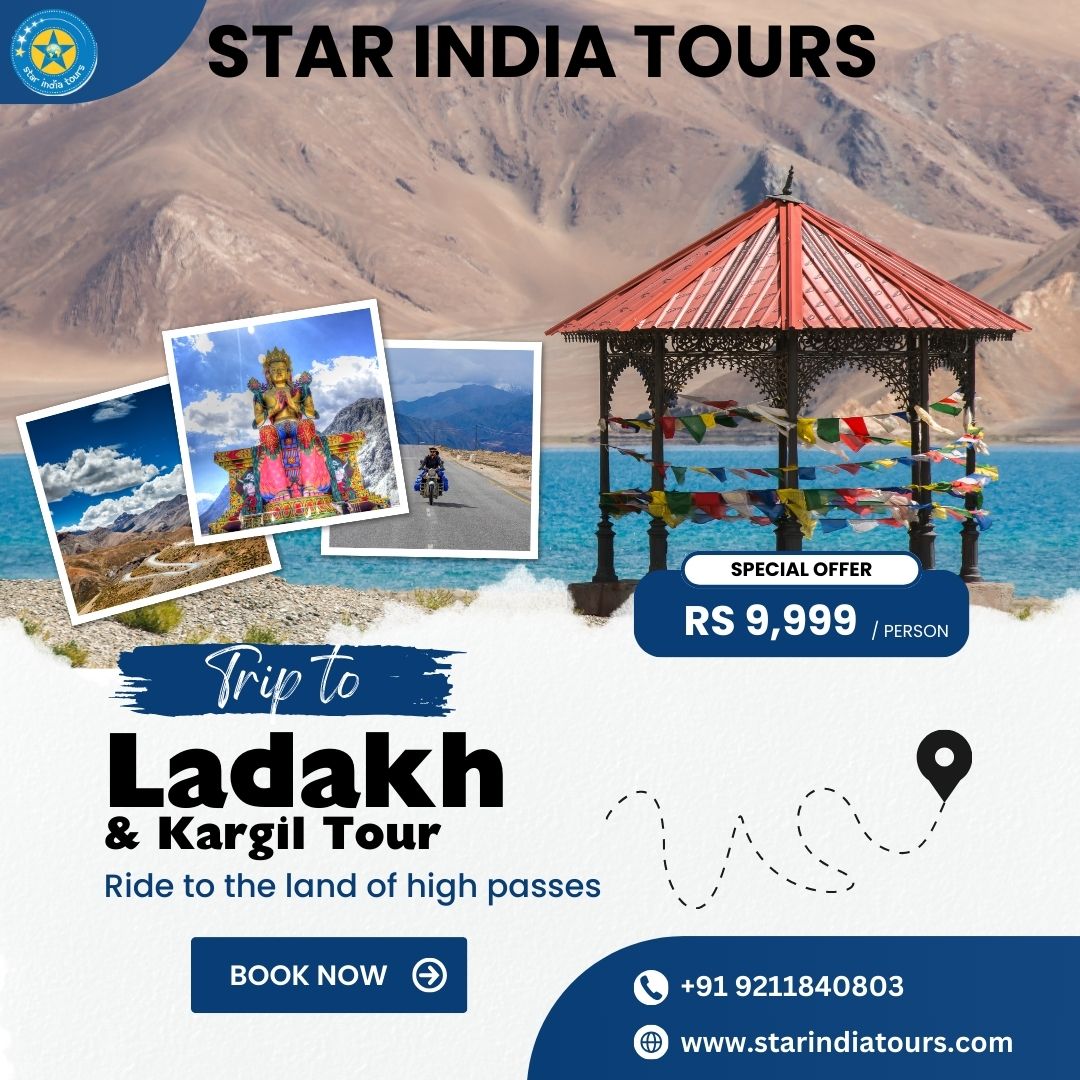Ladakh tour from Delhi

Ladakh and Kargil, nestled in the northernmost part of India, are destinations that offer a blend of adventure, tranquility, and rich cultural heritage. From snow-capped mountains to serene monasteries, here’s an account of my journey through these enchanting regions.
Day 1: Arrival in Leh
Flight to Leh: The journey began with a flight to Leh, the capital of Ladakh. The aerial view of the Himalayas was breathtaking, setting the tone for the adventure ahead.
Acclimatization: Upon arrival, acclimatizing to the high altitude was crucial. The day was spent resting, hydrating, and taking short walks around the Leh Market.
Day 2: Exploring Leh
Leh Palace: The morning started with a visit to the Leh Palace, a former royal palace overlooking the town. The panoramic views of Leh and the surrounding mountains were mesmerizing.
Shanti Stupa: Next, we headed to the Shanti Stupa, a beautiful white-domed stupa that offered a peaceful atmosphere and stunning sunset views.
Local Market: The evening was spent exploring the local market, picking up souvenirs, and sampling local delicacies.
Day 3: Monasteries and Pangong Lake
Hemis Monastery: We visited Hemis Monastery, one of the largest and wealthiest monasteries in Ladakh. The vibrant festivals and the serene ambiance made it a memorable experience.
Pangong Lake: In the afternoon, we embarked on a journey to Pangong Lake. The drive through rugged terrains and high mountain passes was adventurous. The lake, with its ever-changing hues of blue, was nothing short of magical.
Day 4: Nubra Valley
Khardung La Pass: Our journey to Nubra Valley began with crossing Khardung La, one of the highest motorable roads in the world. The thrill of being at such an altitude was exhilarating.
Hunder Sand Dunes: Nubra Valley greeted us with its unique landscape of sand dunes. We enjoyed a camel ride on the Bactrian camels, an experience unique to this region.
Day 5: Turtuk Village
Cultural Immersion: We visited Turtuk, a charming village near the India-Pakistan border. The Balti culture, warm hospitality, and lush greenery made it a highlight of the trip.
Day 6: Journey to Kargil
Magnetic Hill: On our way to Kargil, we stopped at Magnetic Hill, known for its gravity-defying phenomenon.
Confluence of Indus and Zanskar Rivers: Witnessing the confluence of the Indus and Zanskar rivers was a sight to behold. The contrasting colors of the two rivers merging was an awe-inspiring sight.
Day 7: Kargil War Memorial
Paying Respects: Visiting the Kargil War Memorial was a poignant experience. The memorial is a tribute to the soldiers who lost their lives during the Kargil War in 1999.
Day 8: Exploring Kargil
Mulbekh Monastery: The Mulbekh Monastery, with its ancient rock carvings, offered a glimpse into the region’s rich history and spiritual heritage.
Local Cuisine: Kargil’s local cuisine, with its distinct flavors, was a culinary delight. We savored traditional dishes like Thukpa and Momos.
Day 9: Drass Valley
Drass War Memorial: Our trip to Drass, known as the second coldest inhabited place in the world, included a visit to the Drass War Memorial. The bravery and sacrifices of the soldiers were humbling.
Day 10: Return to Leh
Scenic Drive: The return journey to Leh was filled with picturesque landscapes and reflective moments of the incredible experiences over the past days.
Tips for Travelers
- Acclimatization: Spend the first day acclimatizing to avoid altitude sickness.
- Permits: Ensure you have all necessary permits, especially for restricted areas like Nubra Valley and Pangong Lake.
- Clothing: Pack warm clothing, even in summer, as temperatures can drop significantly.
- Hydration: Stay hydrated and avoid strenuous activities in the first few days.
- Respect Local Culture: Be respectful of local customs and traditions, especially when visiting monasteries.
